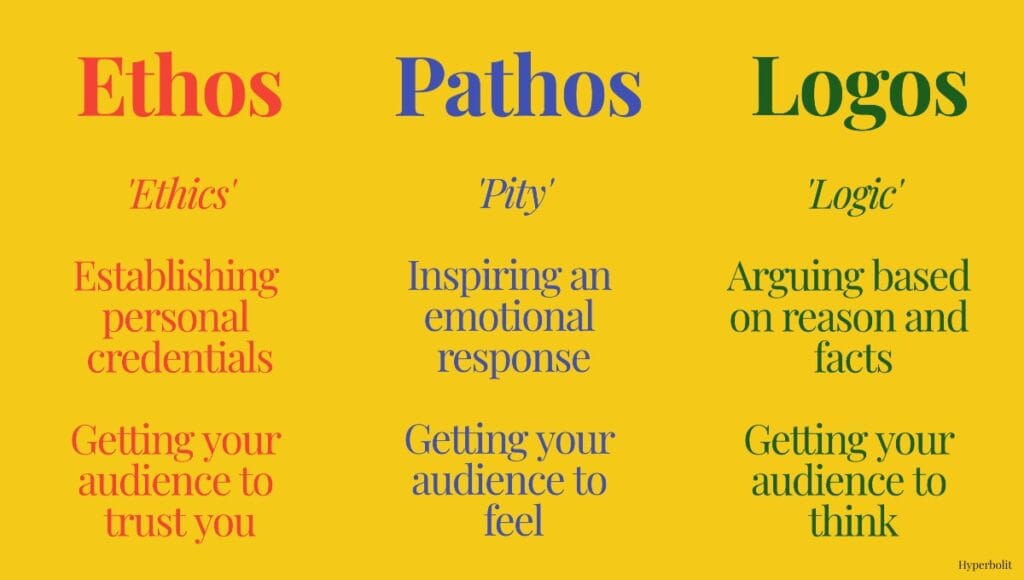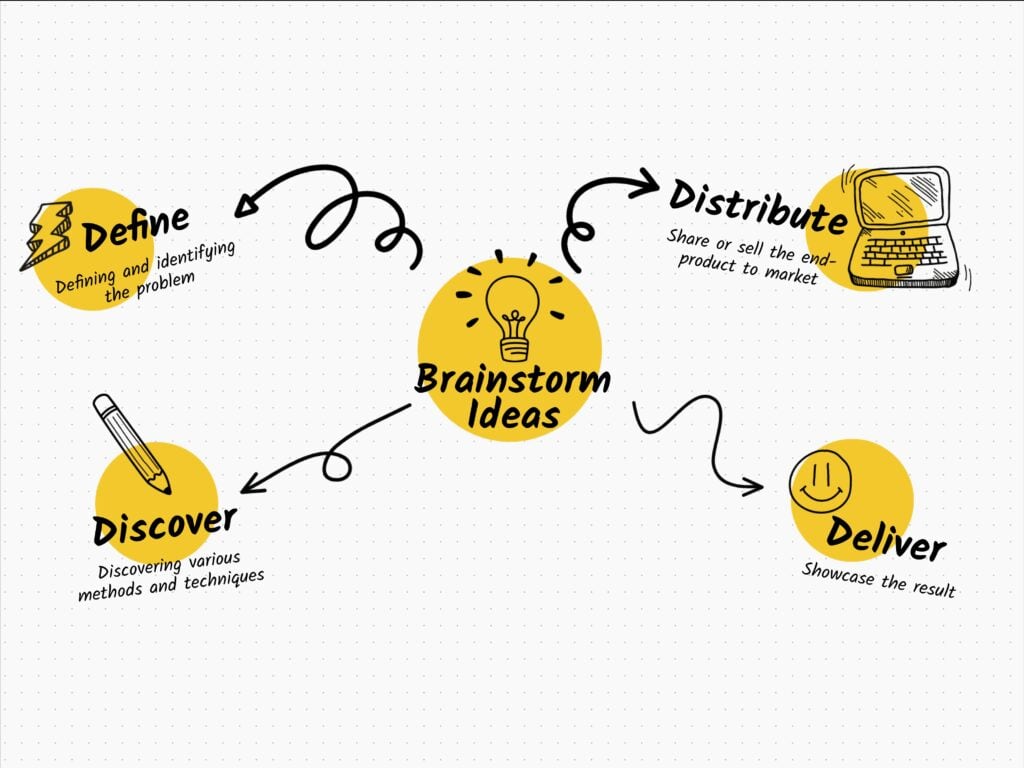Writing an essay isn’t exactly at the top of everyone’s list of favorite things. Any current or former student can attest to that sentiment.
Being assigned an essay can be a stressful and anxiety-filled experience. But understanding how to write a persuasive essay, one that captures the curiosity and attention of a teacher, can change all of that.
Writing a persuasive essay doesn’t have to be a negative experience that one dreads or procrastinates to the last minute.
It can be a great learning experience and one that generates great results with the finished product if you know how to write a compelling essay from the start.
What is a Persuasive Essay?
A persuasive essay is one that not only captures one’s attention but also teaches them something, one that intrigues them in a thought-provoking way.
A persuasive essay is able to do this while presenting the reader with solid arguments and information about the subject matter that shines a new light on the topic altogether.
It’s one thing just to write as much as possible to hit a desired word count.


Never Worry About AI Detecting Your Texts Again. Undetectable AI Can Help You:
- Make your AI assisted writing appear human-like.
- Bypass all major AI detection tools with just one click.
- Use AI safely and confidently in school and work.
It’s another thing to create a paper that persuades the reader or makes them question the knowledge they already had on a topic and see things differently.
Being able to write a persuasive essay is a powerful skill to have in academia that can be easily transferred to the professional world later on in life.
Understanding what it takes to write persuasively and captivate an audience with compelling arguments and prose is a superpower in today’s society considering so many people simply crank as quickly and thoughtlessly as possible to hit word counts and meet deadlines.
What are the Three Elements of a Persuasive Essay

Source: The Hiperbolit School
Without understanding the key components of writing a persuasive essay, you might not be able to deliver a truly engaging and compelling experience.
Being a great writer isn’t just about being good with words, it’s about understanding how to compose a story and tell it in a way that will connect deeply with the reader.
Storytelling isn’t just for fiction. And connecting with a reader is possible regardless of the subject matter or the format of writing you are working on whether it’s a short story or an essay.
Humans are hardwired for storytelling, it’s been a part of humanity since the start.
So understanding how to tell a story and incorporate the key elements of persuasion to create a compelling essay is important on a deeply rooted human level.
Ethos
Credibility is key. Readers want to know that the writer is credible when consuming their content.
When reading an essay, the reader wants to know that the writer sourced the right information from the right places and did enough research to create a valuable, factual, and compelling piece.
Ethos is the process of conveying credibility and trust by not only being authoritative in the writing by sourcing credible information but also by ensuring the writing is sound, there are no typos or grammatical errors, and that the structure and content of the essay are persuasive and worthy of the time spend reading.
Pathos
Provoking specific emotions in your reader can trigger a connection in a way that convinces the reader to feel what you want them to feel.
You can evoke certain emotions by using specific words or telling stories that will psychologically and emotionally put your reader on the same page as you, making them feel and believe the message or argument you are conveying in your writing.
Pathos is what makes so many posts on social media go viral by connecting with people on a deep level by leveraging emotional human responses like anger, joy, empathy, frustration, or humor.
Logos
Appealing to emotions with pathos is very important.
But you also need to appeal to the logical human brain. Logos is the way you appeal to logic in your quest for persuasion. To do this, you need to make crystal clear and sound arguments.
Using statistics, quotes, and facts in your writing makes it much easier to appeal to the logical side of humanity.
Making clear connections using historical data or analogies while having zero holes in your arguments dramatically improves the reading experience for your audience and increases your credibility as a trusted source and writer.
What are the Best Tips for Writing a Persuasive and Compelling Essay
Again, you aren’t just throwing words on paper to hit a word count or deadline.
You are creating a persuasive essay that will connect with the reader and drive a specific and desired result. You need to plan accordingly.
Creating a persuasive essay isn’t possible without taking the right steps to get there. You won’t achieve what you seek if you just sit down and start writing.
In order to write a persuasive essay, you want to take the following steps in order to ensure the best results.
Create an Outline
Map out your ideas and the structure of the essay first. Build out the structure with the main subheadings of the introduction, body, and conclusion.
Once you have that in place, start fleshing out each section with bullet points and arguments that you plan to discuss.
Write with Purpose
Have specific goals in mind with your writing. Understand exactly what you wish to convey and which points or arguments you expect to deliver.
If you don’t have these as your guiding star, you are walking through the jungle without a compass.
Write Authentically
Avoid fluff and fillers. Be specific and honest. The idea when writing a persuasive essay is to compel and convince the reader, not bore them or lose them by rambling.
Put yourself in the shoes of the reader as you write, imagining that you are consuming these ideas for the first time.
Integrate Persuasive Techniques
Incorporate the key elements of persuasion into the writing process so you can connect with the reader emotionally and logically.
Leveraging ethos, pathos, and logos will give you a massive competitive advantage with your writing and make it so you are able to persuade and convince with ease.
Embrace Revisions
Revise relentlessly. Make sure that what you are delivering is polished and free of any errors, holes in your arguments, or any other unnecessary fluff.
Embrace ethos in the revision process to ensure that you are as credible and trustworthy as possible.
Steps to Writing a Persuasive Essay
Now that you have some great tips on how to write your persuasive essay, we need to talk about how you actually get the work done.
Having the right steps in place so you can take the right path to writing your essay is key and will help you become a better, stronger, and more persuasive writer.
Step 1: Organize Your Thoughts (Brainstorming)

Source: Canva
You need to organize your thoughts about the subject matter before you even start researching, let alone writing.
Any preconceived notions or ideas should be listed so you can later identify what you thought about the subject and better understand what other people might think about it before reading your piece.
Once you have established all of your thoughts and organized a concrete list of ideas, you are ready to start researching.
Step 2: Researching Your Topic
The research stage is the foundation. Without doing a deep dive and researching your topic inside and out, you will never be able to write a persuasive essay.
Compile as many statistics, facts, sources, arguments, and studies that will help you create an essay that’s both persuasive and compelling.
Without citing the right sources or backing up your own arguments and ideas with factual and trustworthy data, you’ll be lost.
Investing time into researching and compiling as much useful information as possible before you start writing is key.
Step 3: Develop a Thesis Statement
The thesis statement is the main idea of your essay and will convey the main point or argument that you will be making.
The thesis will be added at the end of the introduction and segue into all of the points and arguments you make in the body that will back up your main stance in the thesis.
Creating a strong thesis before you write is essential and will help guide the rest of the process so you are able to write the most persuasive essay possible.
Step 4: Writing the Introduction
If you lose people in the intro, you are in trouble. A strong and intriguing introduction is a game changer and the only way you will be able to capture the attention of your reader.
Creating a great hook in the intro of your essay before adding your thesis statement will make it so the reader commits early and has their interest piqued in a way that they won’t want to stop reading.
Step 5: Writing the Body of the Essay
The body is the longest part of the essay and is broken up into different paragraphs.
Typically, an essay consists of five paragraphs, three of which compose the body.
The introduction and conclusion are the other two.
Each paragraph of the body should focus on different points and arguments that back up your thesis statement and clearly lay out the points you wish to make with your persuasive essay.
Step 6: Writing the Conclusion
The conclusion should briefly summarize your essay while also reaffirming the arguments and main points you made throughout the essay. Having a strong closing paragraph will help you go out with a bang.
You want to avoid rushing through the conclusion or not taking it as seriously as the rest of the essay.
The last thing you want to do is lose the interest of the reader at the end of the journey. You want them to finish reading and feel both inspired and compelled. The conclusion is your place to do that.
Conclusion
Writing essays doesn’t have to be something you dread doing.
While essays can generate a lot of anxiety because of the hard work that’s necessary to complete the assignment, having a solid understanding of the process will make the experience lighter and more efficient.
Following the right steps and executing the right formula will make it so that every time you have an essay to write, the process will be streamlined and the end result will be far better.
Join the growing community of educators and students who trust Undetectable AI.
Use the widget below (English only) – simply paste your text and see how easily you can detect AI-generated content.
Try it for FREE today and ensure academic integrity in your institution.
